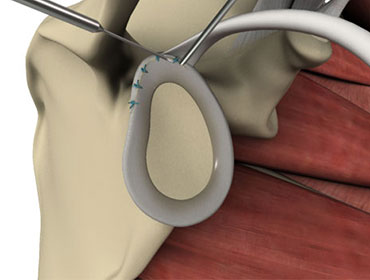SLAP Repair
The upper arm bone, shoulder blade, and collarbone make up your shoulder joint, which is a ball and socket joint. The glenoid cavity is where the head of the upper arm bone inserts into the socket of the shoulder joint. The labrum is a strong fibrous tissue that surrounds the glenoid's outer margin.
A superior labrum anterior and posterior tear, often known as a SLAP tear, is a labrum injury. The biceps tendon, which is linked to the top section of the labrum, may also be injured. A fall onto the shoulder or repeated use of the shoulder when throwing causes the injury. A SLAP rupture can be addressed with a SLAP repair, which is an arthroscopic surgical technique.

